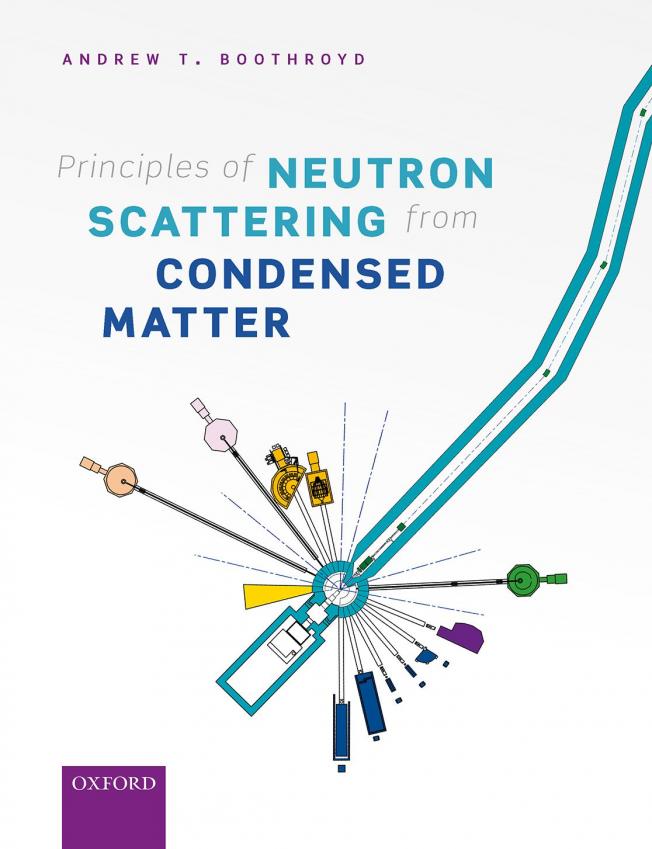Cooperative Jahn-Teller distortion in PrO2
Physical Review B - Condensed Matter and Materials Physics 70:2 (2004)
Abstract:
We report neutron diffraction data on single crystal PrO2 which reveal a cooperative Jahn-Teller distortion at TD=120±2 K. Below this temperature an internal distortion of the oxygen sublattice causes the unit cell of the crystallographic structure to become doubled along one crystal axis. We discuss several possible models for this structure. The antiferromagnetic structure below TN=13.5 K is found to consist of two components, one of which shares the same doubled unit cell as the distorted crystallographic structure. We also present measurements of the magnetic susceptibility, the specific heat capacity, and the electrical conductivity of PrO2. The susceptibility data show an anomaly at a temperature close to TD. From the specific heat capacity data we deduce that the ground state is doubly degenerate, consistent with a distortion of the cubic local symmetry. We discuss possible mechanisms for this. The conductivity shows an activated behavior with an activation energy Ea=0.262±0.003 eV.Field-induced magnetic and structural domain alignment in PrO2
Physical Review B - Condensed Matter and Materials Physics 70:2 (2004)
Abstract:
We present a neutron diffraction study of the magnetic structure of single crystal PrO2 under applied fields of 0-6 T. As the field is increased, changes are observed in the magnetic Bragg intensities. These changes are found to be irreversible when the field is reduced, but the original intensities can be recovered by heating to T> 122 K, then recooling in zero field. The antiferromagnetic ordering temperature TN=13.5 K and the magnetic periodicity are unaffected by the applied field. We also report measurements of the magnetic susceptibility of single crystal PrO2 under applied fields of 0-7 T. These show strong anisotropy, as well as an anomaly at T=122±2 K, which coincides with the temperature T D=120±2 K, at which a structural distortion occurs. For fields applied along the [100] direction the susceptibility increases irreversibly with field in the temperature range TNStripe order and magnetic transitions in La2-x Sr x NiO4
Physical Review B - Condensed Matter and Materials Physics 70:2 (2004)
Abstract:
Magnetic order has been investigated in stripe-ordered La 2-xSrxNiO4 (x=0.275,0.37,0.4) by dc magnetization and by polarized- and unpolarized-neutron diffraction. In the magnetically ordered phase, all three compositions exhibit a magnetic transition consistent with a spin reorientation in the ab plane. For x=0.37, the spin axes rotate from an angle of 37.7°±0.3° to the stripe direction at 71 K, to 52.3°±0.20 at 2 K. The x=0.275 and 0.4 compounds were found to undergo a similar spin reorientation. A spin reorientation has now been observed to occur for five different doping levels in the range of 0.275≤x≤0.5, suggesting that this spin transition is an intrinsic property of the stripe phase.Critical behavior dependence on Sr concentration in La1-xSrxMnO3
J APPL PHYS 95:11 (2004) 7366-7368
Abstract:
The thermal diffusivity in the vicinity of the magnetic transition of a set of La1-xSrxMnO3 (0less than or equal toxless than or equal to0.3) single crystals has been measured using the photopyroelectric technique. Taking into account that the inverse of the thermal diffusivity behaves as the specific heat, the critical exponent alpha has been obtained. In the pure and lightly doped samples (x=0,0.05) where the transition is antiferromagnetic-paramagnetic, the critical exponent is consistent with the Heisenberg model (alpha=-0.115). For Sr concentration higher than 0.20, where the low temperature phase is ferromagnetic, a drastic change in the critical exponent has been observed, approaching Ising behavior (alpha=+0.11) at the highest concentration. (C) 2004 American Institute of Physics.Ferromagnetic in-plane spin fluctuations in NaxCoO2 observed by neutron inelastic scattering
Physical Review Letters 92 (2004) article 197201 4pp


